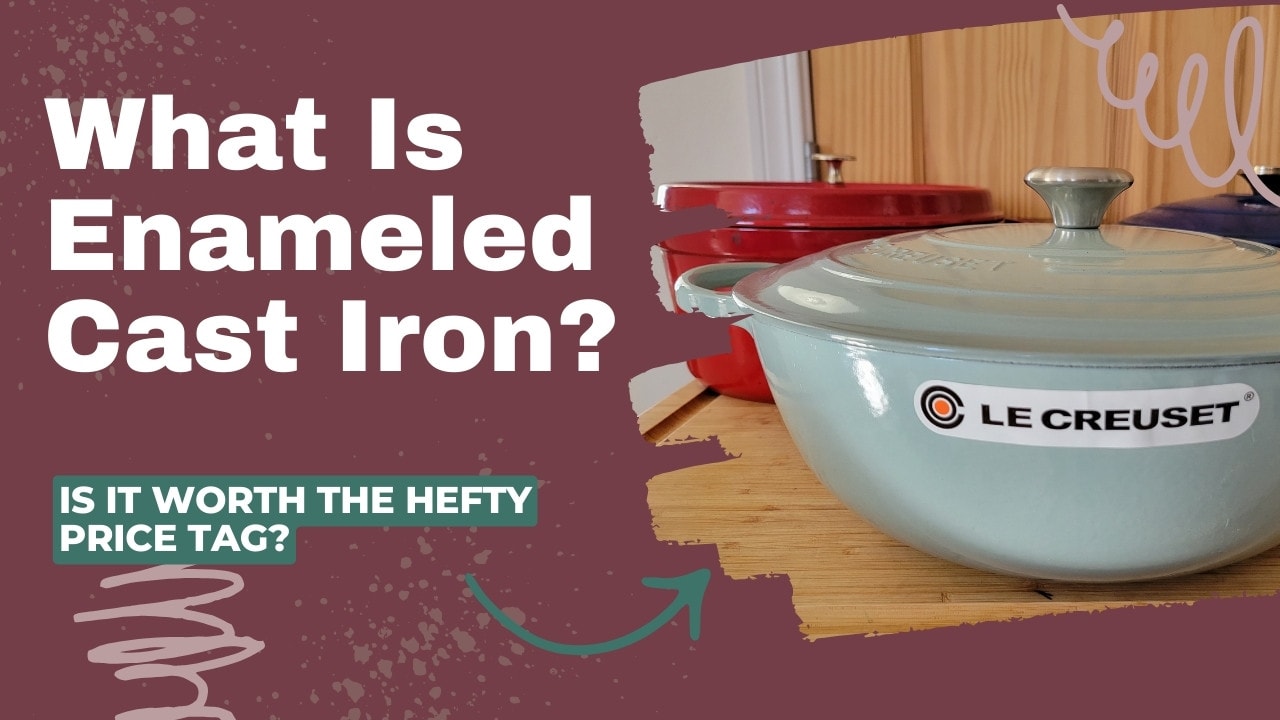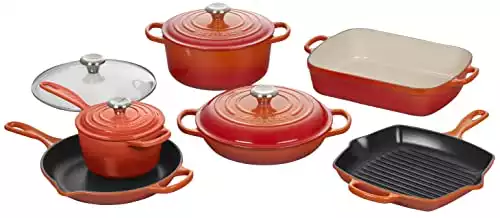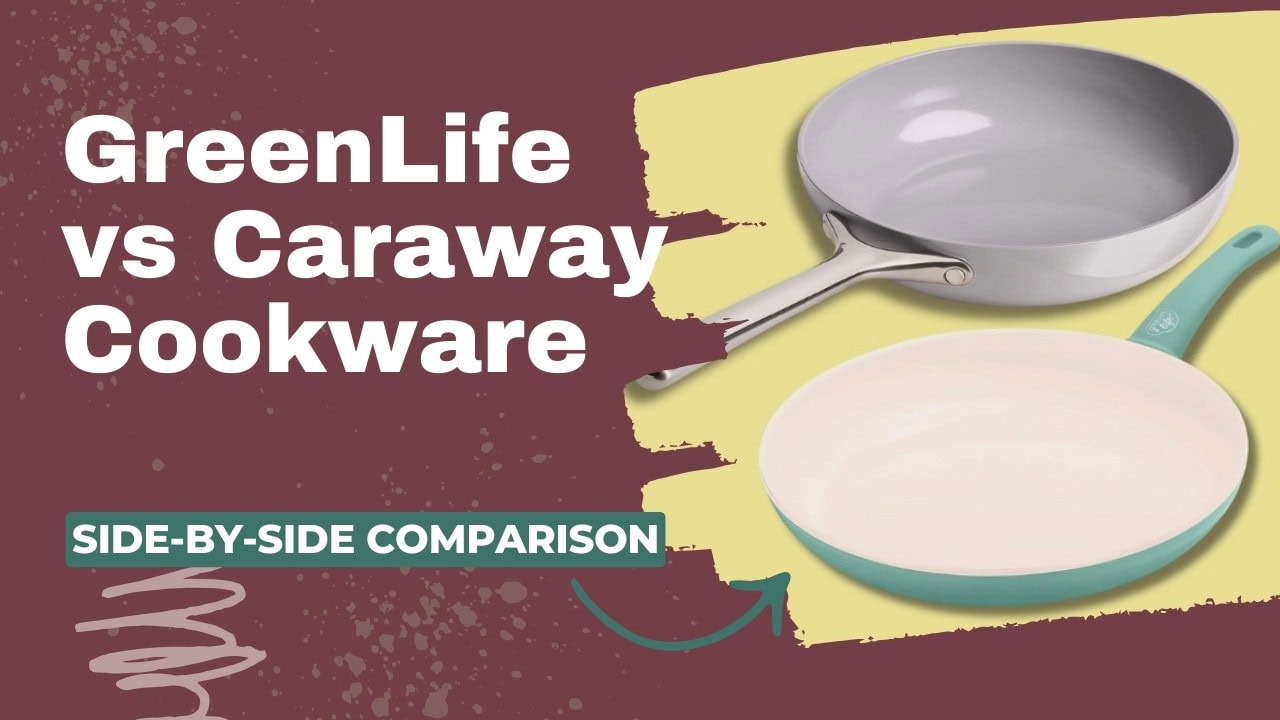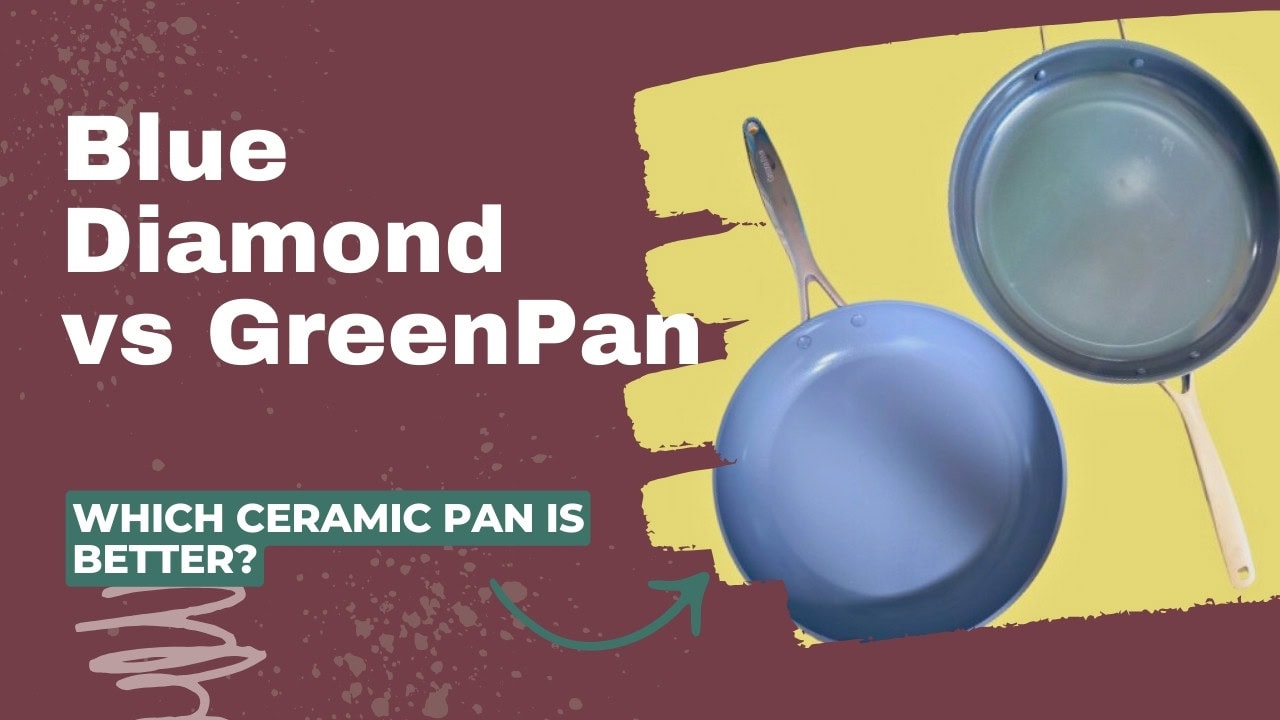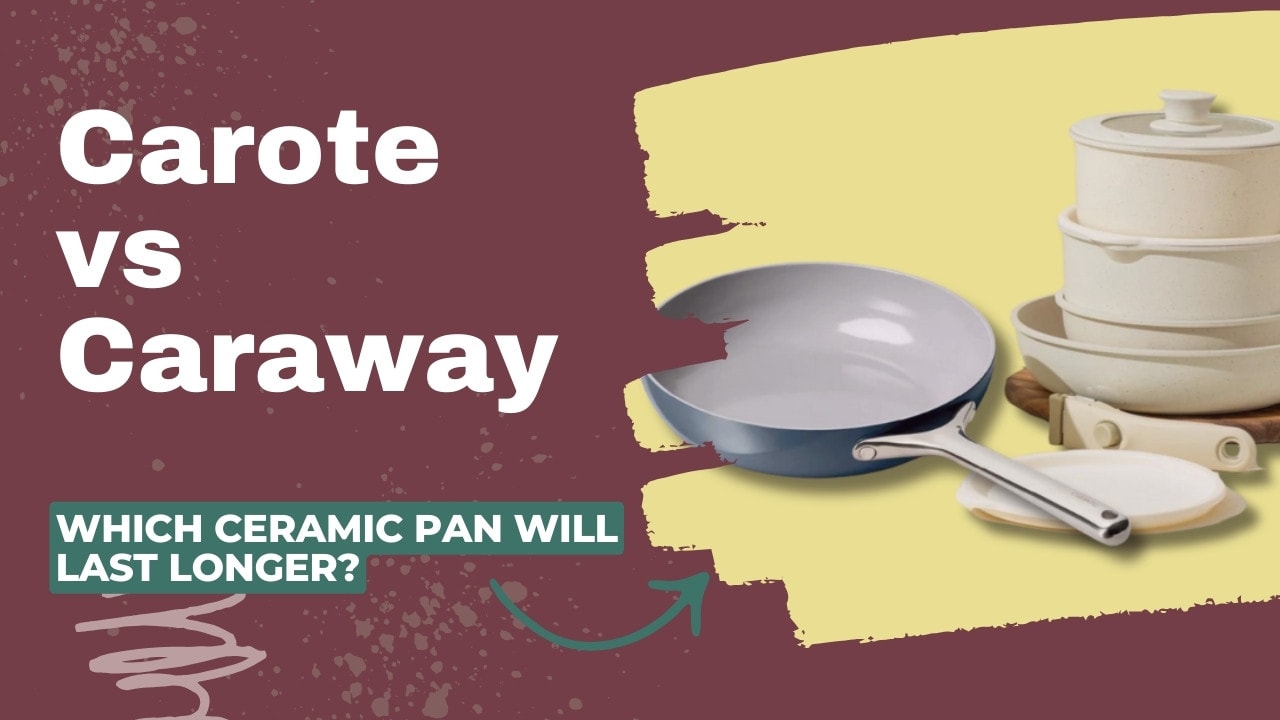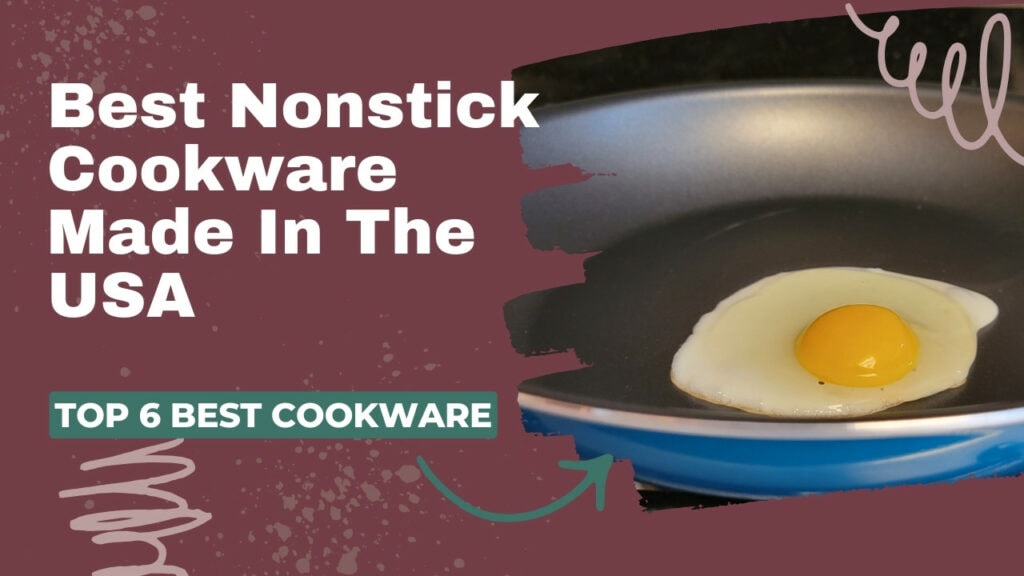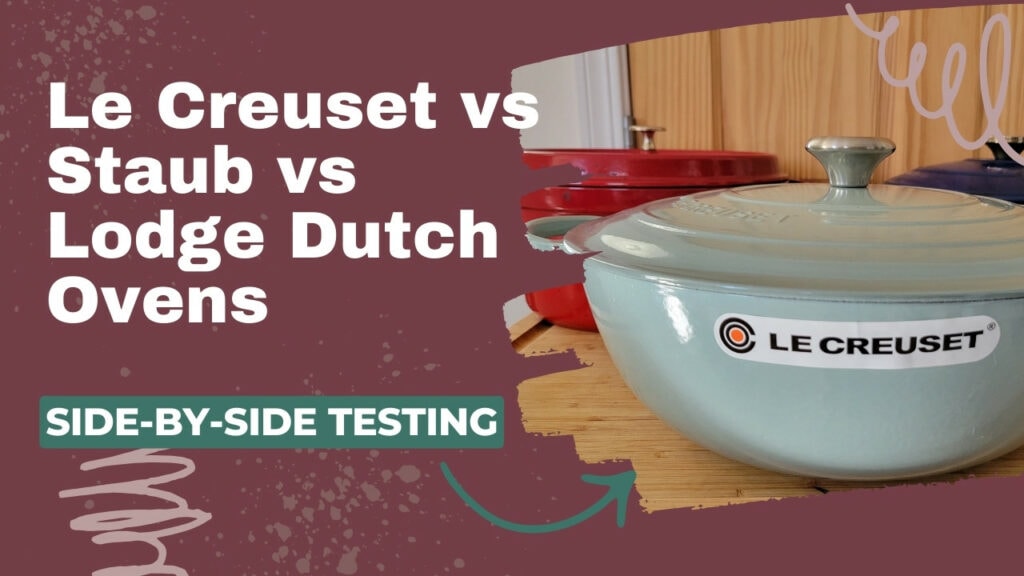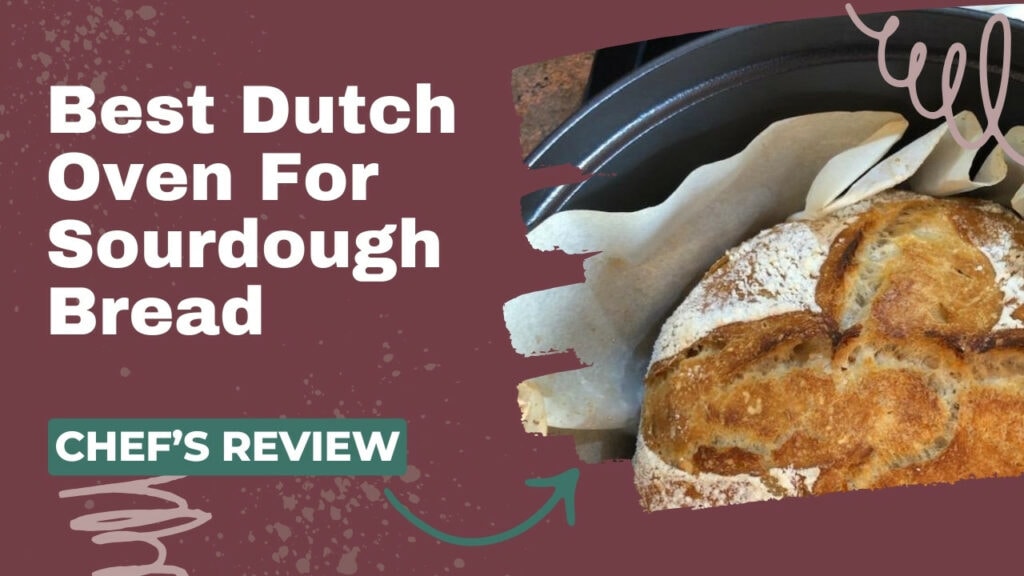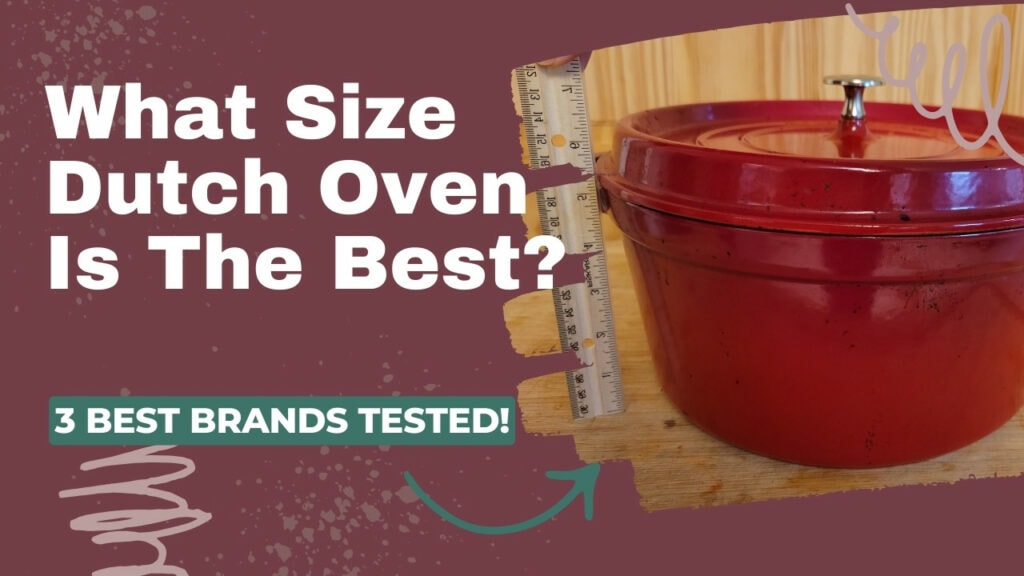After about the 50th time walking past a Le Creuset store at the mall, the colorful cookware in the shop windows finally drew me in. I left the store with a 5qt signature Dutch oven under my arm – not knowing quite what I was getting myself into.
Le Creuset and its competitor Staub have almost a cult following thanks to their French-made enameled cast iron cookware. But what exactly is enameled cast iron, and is it worth the hefty price tag?
By the end of this article, you’ll know everything there is to know about enameled cast iron so you can decide if it has a place in your kitchen.
What is Enameled Cast Iron Cookware?
Enameled cast iron is raw cast iron cookware that has been coated in two layers of a silica-based solidified glass mass. This creates a shiny, nonreactive surface that is semi-nonstick. The coating allows you to harness raw cast iron’s superior heat retention and durability without needing to season it or worrying about iron leaching into your food.
Enameled Cast Iron Explained
What is Enameled Cast Iron Made From?
The core of enameled cast iron pots and pans – even the ones that sell for close to $500 – is simply natural iron that you can buy in its uncoated form for a fraction of the price. But raw cast iron has its faults. Acidic foods will eat it away, it can suffer from thermal shock, and it needs to be seasoned. So, porcelain enamel coatings were created to solve these problems while taking advantage of the positive aspects of cast iron.
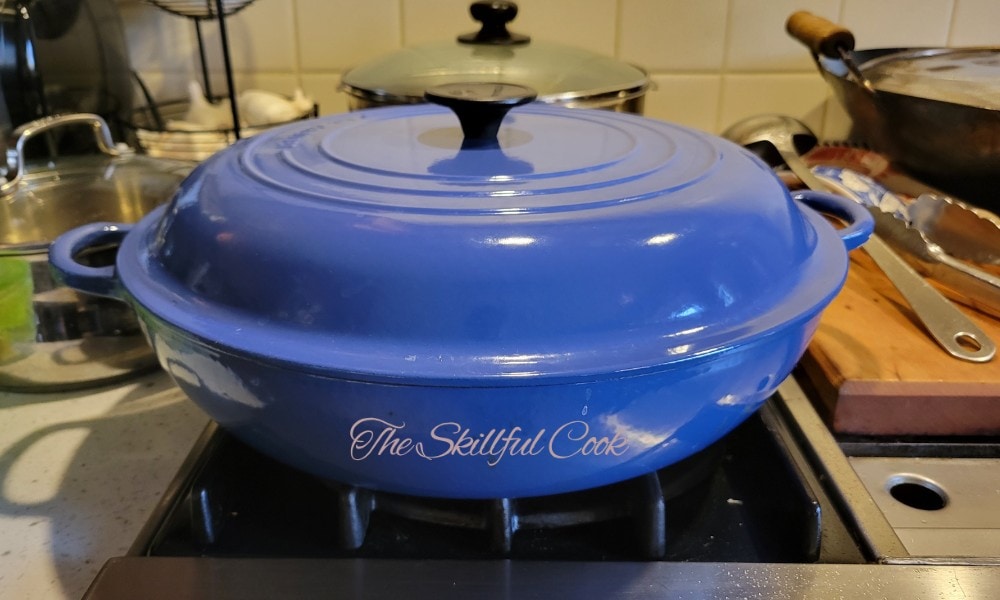
The coating is made from porcelain particles, which are natural ceramics. It’s very easy to color these particles with pigments, which is why enamel cast iron comes in so many fun colors. The raw cast iron is powder coated with an electrostatic or corona gun and then baked in a kiln to melt the porcelain and adhere it to the metal. This process is repeated to produce a 4-5mm thick coating. The first layer adheres the coating to the metal, while the second layer creates a glossy, nonreactive surface and increases thermal shock resistance.
The enamel coating creates a shiny, nonreactive finish, increasing durability and versatility – and, may I say, snob appeal.
Types of Enameled Cast Iron Cookware
You can buy a full set of enameled cast iron cookware, but these are very expensive. Other materials are better suited for specific tasks than enameled cast iron. For instance, I prefer stainless steel for a stockpot because it heats more quickly. The most popular enameled cast iron pieces are Dutch ovens and skillets.
I love enameled cast iron Dutch ovens because their heat retention is superior to competitors like raw cast iron and stainless steel. You can start a dish on the stovetop then pop the lid on and let it slow cook in the oven. Once it’s finished, you can transfer the dish straight to a pot holder on the dining table because the cookware is so visually appealing.
Enamel cast iron skillets are great to have on hand as a multipurpose pan. You can fry, boil, saute, and sear in one of these handy skillets. And it doesn’t matter how acidic your food is; the porcelain enamel won’t react. I still prefer raw cast iron for searing a steak, but I gravitate to my enameled cast iron more regularly for everyday cooking.
Best Enameled Cast Iron Brands
There are three leading brands in enamel cast iron: Le Creuset, Lodge, and Staub.
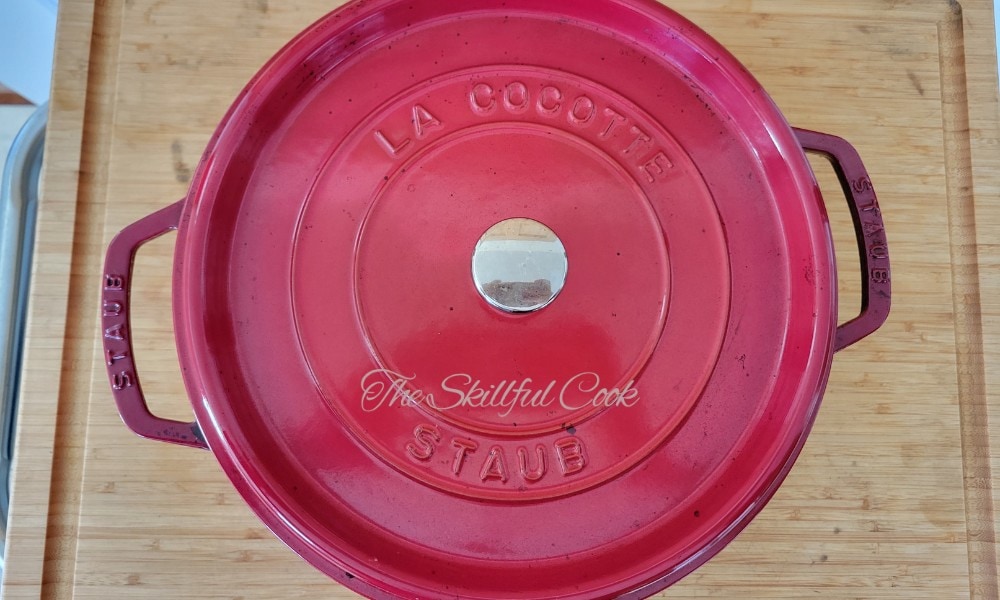
I would recommend buying from these three over any other alternatives because they all go through thorough third-party testing for lead – but I’ll get into that a little later. Cookware from these brands is also proven to be high-quality, heirloom pieces that you can pass down in your family.
Staub and Le Creuset products are manufactured in France. Both the US and France have strict laws around the safe manufacture of enameled cast iron, so products manufactured there are more reliable. I would be wary of any enamel cast iron made in Mexico or China as these countries don’t have such strict safety protocols as the USA and may not be safe to cook in.
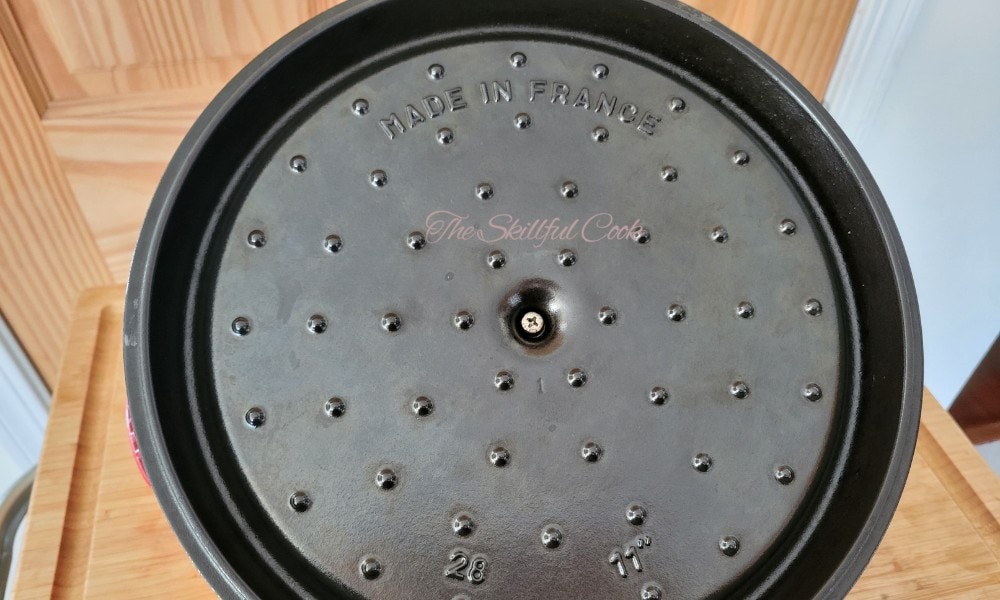
Lodge’s enamel cast iron range is made in China, but the process is overseen by an American-owned third-party inspection company. They assess each piece under strict regulations to ensure they are California Prop 65 compliant.
While Lodge is slightly more affordable, most high-quality enameled cast iron is relatively pricey. This is because the porcelain enamel is expensive to produce and to adhere to the raw cast iron. In my opinion, it’s worth saving up and making that initial investment because you’ll never have to replace that pan.
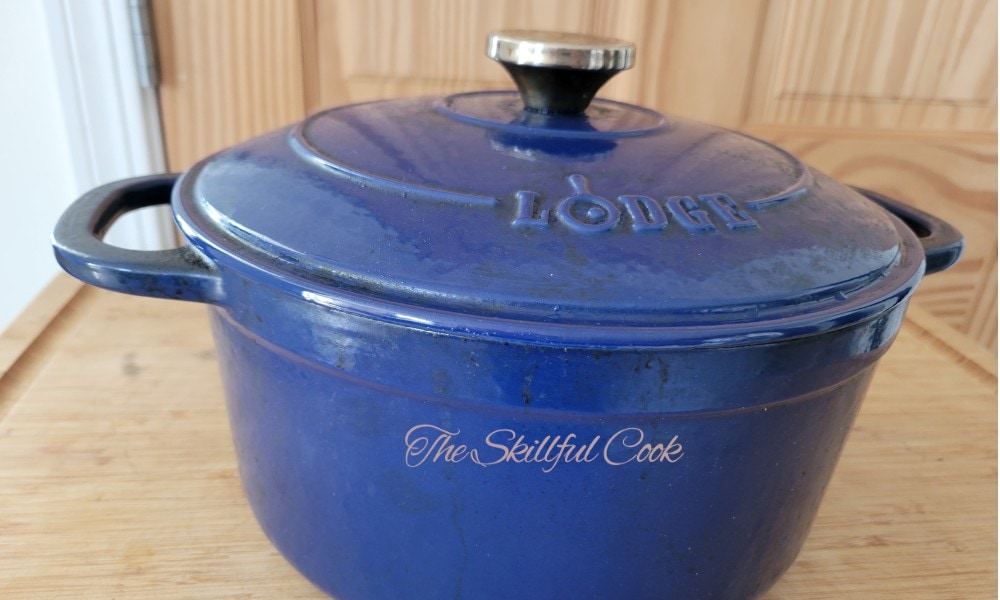
I’ve compiled a full round-up of the best enamel cast iron cookware on the market if you want specific product recommendations.
How Does Enameled Cast Iron Compare to Regular Cast Iron?
So, while both these materials are the same at their core, the addition of the porcelain enamel makes a significant difference to the pan’s performance. Let’s directly compare them to see how they measure up.
| Raw Cast Iron | Enameled Cast Iron |
|---|---|
| Transfers iron to foods | No iron leaching |
| Reacts with acidic foods | Nonreactive to any ingredient |
| Prone to rust | Won’t rust unless enamel chips |
| Needs to be seasoned | No seasoning required |
| Great for searing | Does not sear as well |
| Limited to certain ingredients | More versatile |
| Handles high heat on stovetop | Only medium-low on stovetop |
| Can tolerate very high oven temperatures | Oven safe to 400°F |
| Metal utensil safe | Not metal utensil-safe |
Do You Need to Season Enameled Cast Iron?
The beauty of enameled cast iron is that it does away with the need for seasoning to maintain a nonstick finish. This cuts down on a lot of maintenance compared to raw cast iron.
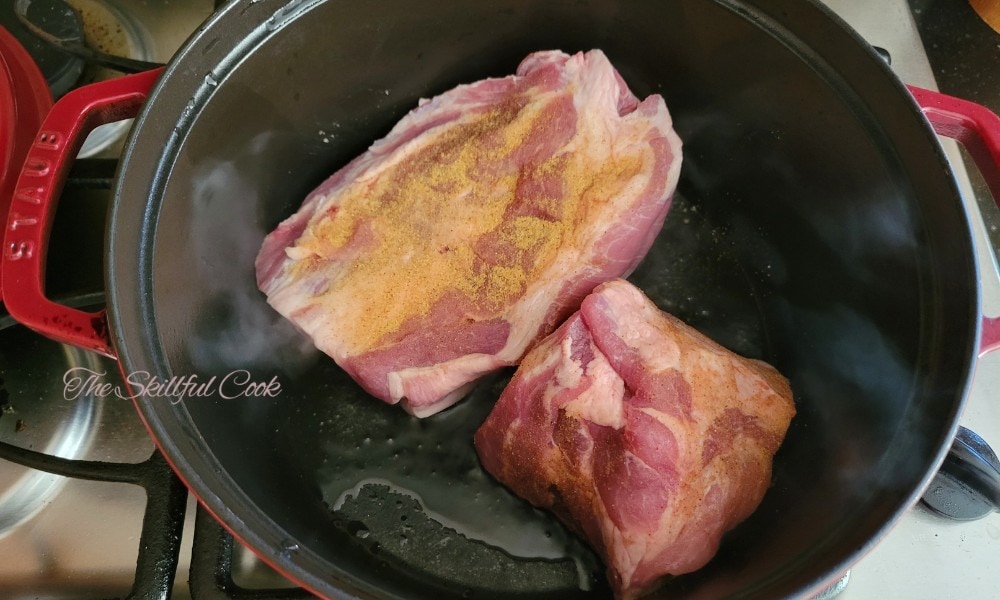
Enamel cast iron is considered semi-nonstick. This means these pans won’t behave like Teflon nonstick cookware but can have nonstick qualities if you use the pan correctly. The key to creating a nonstick surface with enameled cast iron is preheating the pan well with a good glug of oil. You should also allow your food to brown before flipping it, or it will stick.
What Can You Cook in Enameled Cast Iron?
One of the major selling points of this cookware is that enameled cast iron is ideal for cooking acidic foods – unlike cast iron, carbon steel or aluminum. You can simmer tomato sauce for hours or deglaze with wine, and there will be no metallic aftertaste from leaching iron.
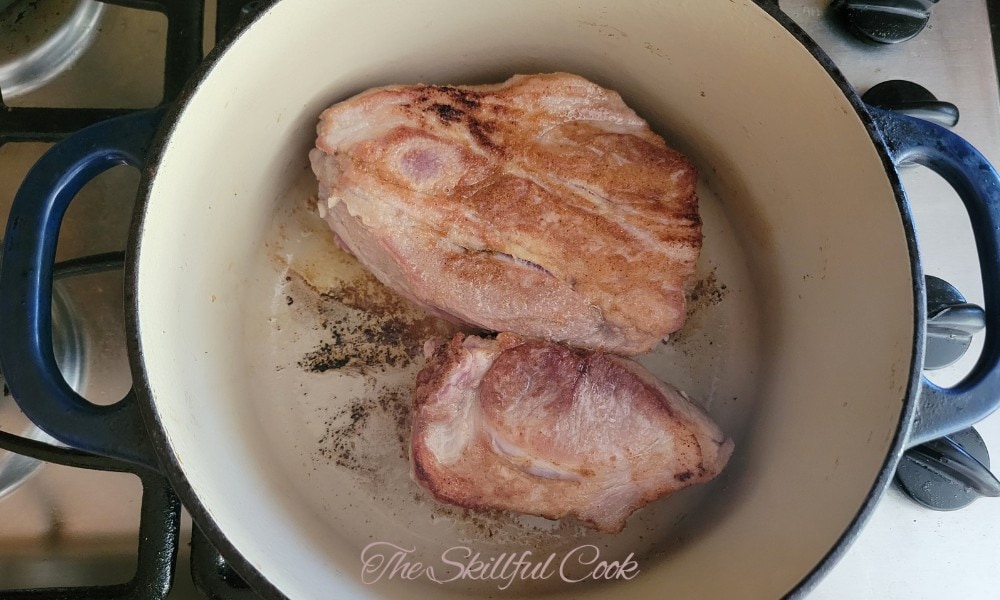
As this indicates, enamel cast iron is very versatile, so there’s not much you can’t cook in it! These vessels are suited for boiling, sauteing, searing, and slow cooking. They are suitable for all cooktops, including induction, and they seamlessly transfer from stove to oven (max 400°F).
Enameled cast iron Dutch ovens are also wonderful for baking bread!
Is Enameled Cast Iron Safe to Cook On?
Enameled cast iron is considered safe by most experts as long as it is bought from a reputable brand that passes California Prop 65 tests. Brands like Le Creuset, Lodge, and Staub are all considered to be nontoxic cookware because they comply with these standards.
In the past, lead was used in the process of fusing the porcelain to the metal when making enamel cast iron because it helped create the glossy finish. But modern manufacturing standards have evolved to eliminate or significantly reduce the use of lead in cookware manufacturing.
Now, enamel cast iron has to be tested under California Proposition 65 testing standards to determine that they don’t contain leachable lead.
Chipping the enamel coating should not increase your exposure to lead. If it winds up in your food, the chipped piece of enamel itself will be very unpleasant to bite down on, but the health implications of swallowing it are minimal or unknown.
Due to the increased risk of rust or bacteria building up in the chipped area, I don’t recommend cooking with enamel cast iron that is chipped.
Pros and Cons of Enameled Cast Iron
So, to sum all of this up, let’s look at some quick pros and cons:
Pros
Cons
Conclusion
Overall, enameled cast iron is an incredible material that, in my professional opinion, is well worth the initial investment. It harnesses all the power of raw cast iron and encases it in a glossy coat of porcelain enamel to make it more durable and versatile. If you buy from reputable brands like Lodge, Le Creuset, and Staub, you can cook safely with this cookware for years to come.
As always, if you have any questions, leave them below, and I’ll be here to answer them.

